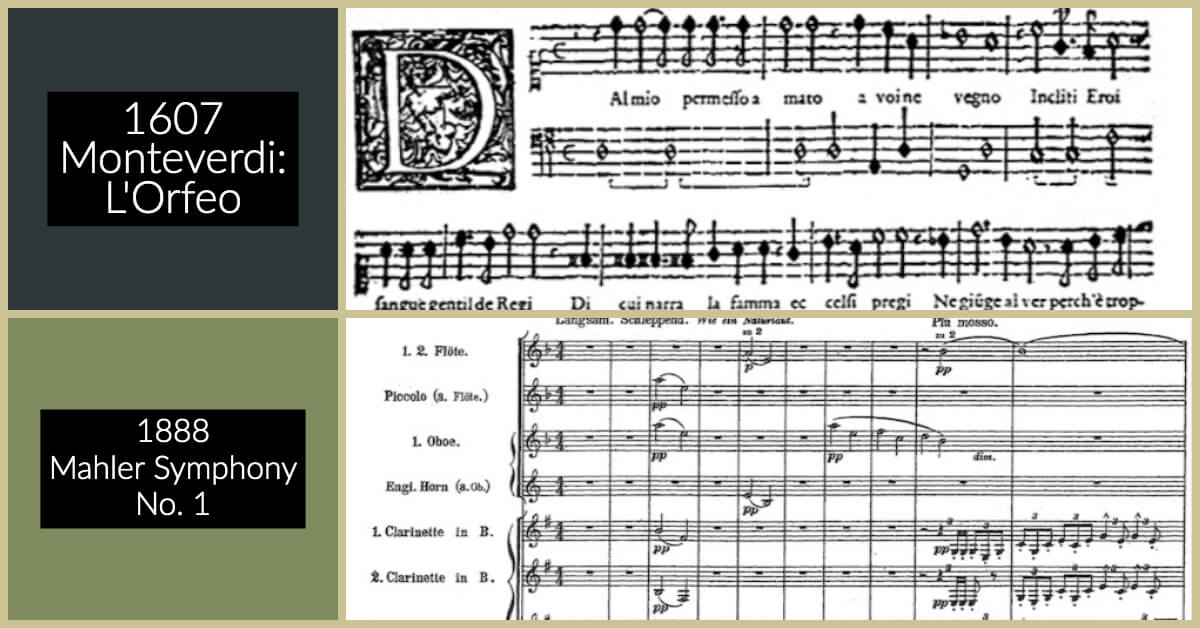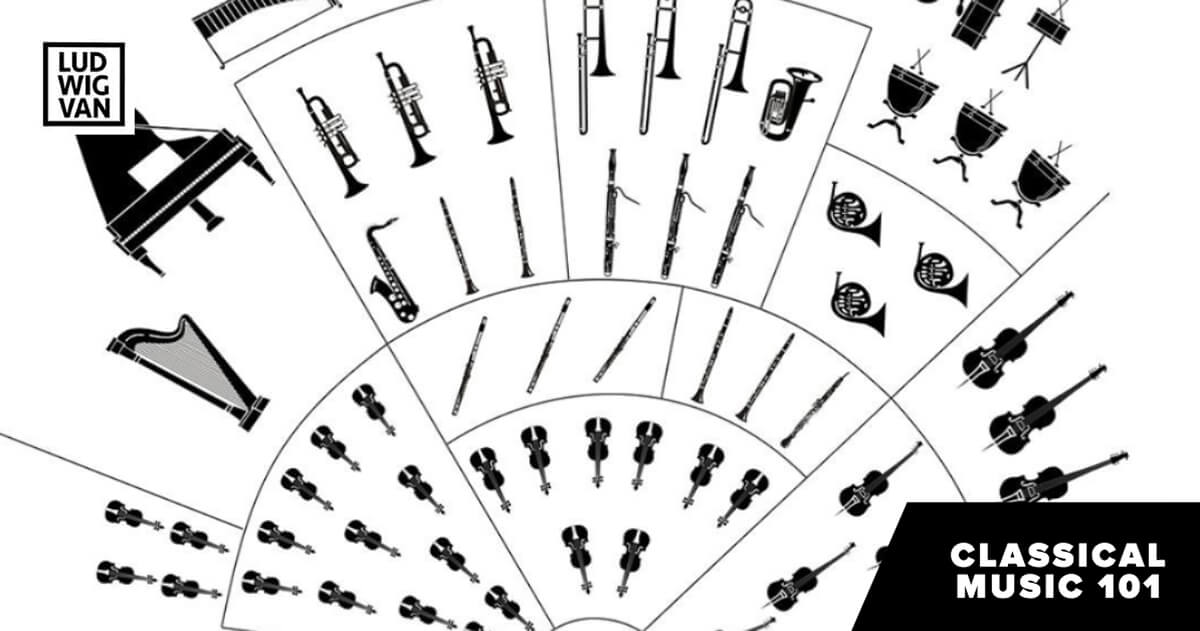The Birth And Evolution Of The Modern Orchestra
By John Terauds
Human history is underscored by music — largely in a communal, participatory way in most cultures, be they holding out in the Amazon rainforest or across the street from the casino in Monaco. But European culture is alone in the breadth and size of the band that has evolved to perform art music: the orchestra.
The evolution of the orchestra is not a quick or simple story, but what’s fascinating is how the growth of the orchestra perfectly mirrors the decline of two things:
The first is how, as the orchestra grows, the act of making music goes from creative, where each performer is asked to improvise in concert with each bandmate, to interpretive, where each performer follows the composer’s instructions as dictated by a conductor/leader.
The second is how, as the orchestra grows, the gap between the music and the listener grows — the listener becomes a passive force, rather than one who could potentially get up and sing, dance, or strum a lute.
16th Century
Until the Renaissance, people made music by singing and/or playing instruments that are blown, strummed or struck in groups no larger than the average modern garage band.
In the 16th century, art music in homes wealthy enough to allow this sort of leisure activity consists of virginals, small consorts of viols (a group of instruments from the family ranging from soprano to bass) and a woodwind or two. Big occasions added percussion and the ancestors of today’s brass instruments.
This period also saw the birth of musical theatre which turned into masques in England and opera in Italy by the end of that century.
Until this time, if the music was notated, it usually didn’t specify instruments; people were asked to combine whatever musical forces were available, and match each instrument’s range with the corresponding line of music. Usually, there was a melody, or tablature for lute/guitar, and/or a figured bass (the Early Music version of chord progressions).
The sheet music gave each piece shape and direction, and it was up to the musicians to work out what it would actually sound like in performance.
These bands were known as consorts — and that’s the specific reference that groups like the Toronto Consort intend. Here they are in a snippet from their 2008 program on the confluence of musical styles in Venice:
Then along came the Italian opera composers, like Claudio Monteverdi, who started requesting specific instruments to accompany their operas. For his landmark 1607 Orfeo, the first surviving opera of the current era, Monteverdi asks for: two violins, bowed string quartet, a string trio, two harps, two cornetts and organ.
17th Century
One thing becomes clear from this point on: stringed instrument families are central to the ensemble.
In early 17th century France, for example, one of the most significant orchestras as the Violons du Roy, made up of six violins, 12 violas and six cellos. String orchestras became common in Italy, as well. By the end of that century, Versailles had a standard orchestra of strings (with the violin family steadily forcing out the old-fashioned viols), two oboes, bassoon and continuo keyboard (portatif (small) organ and harpsichord). Courts in England, and the Austro-German states flattered by imitation.
This is the core makeup of Toronto’s Tafelmusik period-instrument orchestra.
Unlike the case with Tafelmusik, though, which in baroque repertoire is led by its concertmaster, the majority of early 18th century orchestras were led from the keyboard, which would have been parked dead-centre, with the player’s back to the audience.
This is Tafelmusik playing the music from the height of Versailles’ 17th-century musical glory:
19th Century
By the turn of the 19th century, the French horn and clarinet have joined the woodwinds. There is also timpani present and the brass section starts to become a permanent feature. Where the concertmaster isn’t leading, a conductor has been invited to step in to lead.
Here is the Orchestra of the Age of Enlightenment and conductor Ed Gardner with a spot of Haydn:
20th Century
Ludwig van Beethoven and Hector Berlioz, the prototypes of the bigger-is-better ethos that takes us through to the beginning of the 20th century, try all sorts of things to increase the size and dynamic scope of the orchestra, which will grow to 100 or more players by the end of the 19th century.
This is also the time when all the great concert halls are built. The Musikverein in Vienna opened in 1870, Amsterdam’s Concertgebouw in 1888, Toronto’s Massey Hall in 1894, Boston’s Symphony Hall in 1900, to name but a handful.
The 19th century is also when orchestras go from being employed by aristocrats, rulers and opera houses to institutions in their own right, programming their own concert seasons, selling subscriptions and raising money to keep the organization going. The new concert halls truly institutionalize the orchestra.
It’s also a time when the whole idea of a core repertoire comes to be. Before the 19th century, orchestras played purely new music. Then people like Felix Mendelssohn came along and got people interested in J.S. Bach again. There were Mozart and Haydn symphonies to program — and Beethoven’s works have never gone out of circulation.
Programming becomes an act of curating musical history, not just providing musical entertainment.
As orchestras align themselves with specific repertoire, they adjust their size and sound accordingly. The chamber orchestra — the size of a full baroque orchestra, really — is born. In the 20th-century, percussion becomes a more prominent part of the ensemble and, in the 21st, digital sound has become a concert partner in the orchestral mix, as well.
Specialization and rules are the hallmarks of modern orchestral work: The modern symphony score lays out a line of music for each instrument, provides detailed dynamic, rhythmic and articulation notes, and the musician must not make up their own music on the fly. The conductor is in charge and is, hopefully, a star who can attract more ticket buyers.
Here’s a stark example: the opening bars of Orfeo vs Gustav Mahler’s Symphony No. 1 (completed in 1888):

The audience must, in turn, listen attentively and clap only when permitted.
via – By John Terauds
